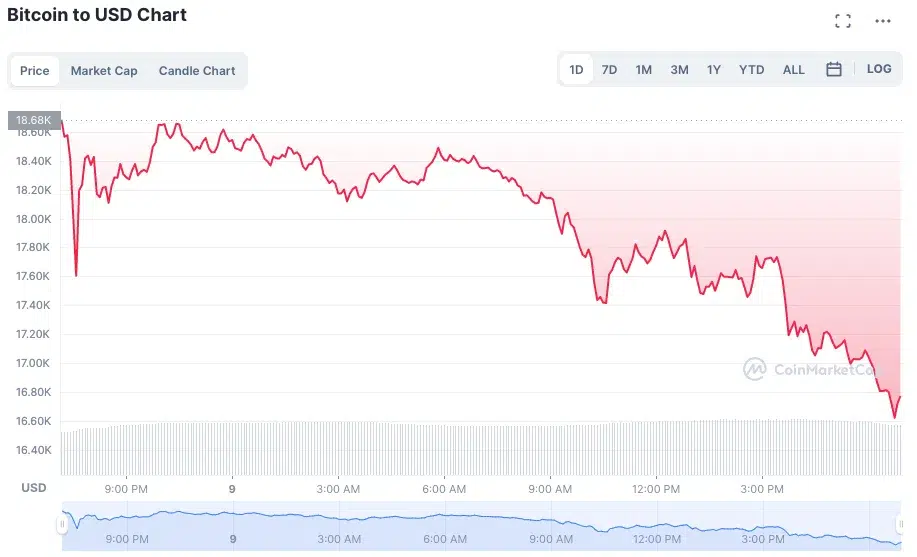The downfall of crypto exchange FTX in November 2022 marked a major turning point for our beloved cryptocurrency industry. All the drama that ensued surrounding the total mismanagement of the cartel behind famous cryptocurrency exchange resulting in they totally losing their shirts at their trading desk, Alameda Research. We see that this still has an impact on the industry today. In this article, we are going to check out the impact that is known for the Alameda gap and crypto liquidity crisis and see what it is all about.
The Alameda gap and crypto liquidity refers to the sharp decline in cryptocurrency liquidity and order book depth across crypto markets that occurred after the collapse of FTX and its trading firm Alameda Research in November 2022. The gap highlights the drainage of liquidity, given their previous position as a major market maker in crypto.
The FTX Collapse
What is very poorly managed by FTX where the user funds that were traded back and forth between FTX branches and were commingled between wallets of the exchange and of its employees. As a result there was a gap created of more than $3 billion in debts and 10 billion more in missing customer funds. While many known creditors lost it all, the ripple effect it had led to a plunge in the crypto market cap from over $1 trillion to under $800 billion.
The first sign of the collapse began when concerns emerged about Alameda’s large FTT holdings and Binance triggered an FTT sell-off and subsequent liquidity crunch and bank-run as customers rushed to withdraw funds. Not long after, withdrawals were paused and FTX filed for Chapter 11 bankruptcy.
Read our take on Solana’s future growth prospects and remaining challenges after the FTX collapse.
The Relationship Between FTX and the Alameda Gap And Crypto Liquidity Crisis
Now a year later since the implosion of the second biggest crypto exchange of the 2021 and with the appointment of the new CEO John J. Ray III, to succeed Sam Bankman-Fried as the company’s CEO. We saw that in a filing with the United States Bankruptcy Court for the District of Delaware, Ray stated that in over 40 years of his experience in dealing with insolvencies, he had never encountered “such a complete failure of corporate controls and such a complete absence of trustworthy financial information as occurred here”.
Referencing the mismanagement of customer funds on a scale that was just pure amateurism. With wire transfers directly to the trading desk Alameda Research, instead of the specific branch of the FTX Trading LTD. And the covering of massive trading losses, although Alameda had backdoors in the code that made it virtually impossible to get them liquidated. On top of that they used borrowed money from their own issued digital assets and still lost.
Both FTX and Alameda Research were closely linked under SBF’s control and his inner circle. This allowed all the fraudulent activities to go longer than expected and well below the radar, but this was until the market decided to turn the tide and dispaly who was swimming naked and who was not.
The Alameda Gap and Crypto Liquidity Crisis
Now that we know how FTX and Alameda are related, we can see why we coin the term ‘the Alameda gap and crypto liquidity crisis’, as it refers to the sharp decline in the cryptocurrency order book depth and influenced the liquidity seen after the implosion.
According to Kaiko, the market depth for Bitcoin, Ethereum, and altcoins on centralized exchanges was around 55% below pre-bankruptcy levels. Plunges in liquidity often occur during volatile periods as traders want to limit more risks and stop max bidding. They then delete their bids and asks from order books and liquidity dries up as snow for the sun.
So in short, the crypto market saw due to the liquidation of big players all connected to FTX and its ponzinomics, a sharp drop in available liquidity. Because it was the ‘research’ of Alameda that got us here and influenced the market stability of crypto, liquidity-wise.
Why the Alameda Gap and Crypto Liquidity Crisis Still Exists
According to data, delivered by Kaiko, we can assess that the Alameda gap and crypto liquidity crisis is still running due to low trading volumes and muted volatility which is another reason traders and liquidity providers remain sidelined. This is of course all speculation because it could be that the hope or belief in crypto disappeared for many together with the implosion of many crypto exchanges, brokers, and custodians.

Looking Ahead After FTX
But we have to look forward because this is the only thing we as the crypto community can do, we cannot change the past and look back at it, it has been a wild and more tumultuous ride. With the first trial and the possible conviction of SBF for 100+ years in prison, we hope we can restore order and see how new market participants fill up the market.
While the market shows very good signs of recovery, and 2024 sets out to be rewarding for anyone in crypto, Alameda gap and crypto liquidity crisis still looms over crypto. The more liquidity, the better. But with more liquidity comes great responsibility and the regulators have got to use this as an opportunity to propose a correct framework that prohibits this practices in the future.
We explain criticisms surrounding the SEC’s crypto regulations and calls for a clear, comprehensive framework. Needed after the Alameda gap and crypto liquidity crisis
Regulators worldwide are now implementing frameworks focused on:
- Investor protection
- Risk mitigation
- Preventing fraud
- Transparency
- Auditing
Conclusion
According to that data, it reveals that the FTX crisis continues to impact crypto markets through reduced order book depth and liquidity, a big hole created by the disappearance of customers’ funds, the reaction, and lost confidence in crypto markets. Although prices are recovering, it may take time to fully restore the market health and thicken that order book depth in ways we were used to before the Alameda gap and crypto liquidity crisis. But remember crypto always arises from the ashes.
Due to the FTX debacle, accelerating regulatory efforts were set to increase accountability and transparency from exchanges, which is good or bad, depending on how you look at it. Ultimately, sensible oversight is maybe not that bad and could help mature the ecosystem, if done correctly ofcourse.



















